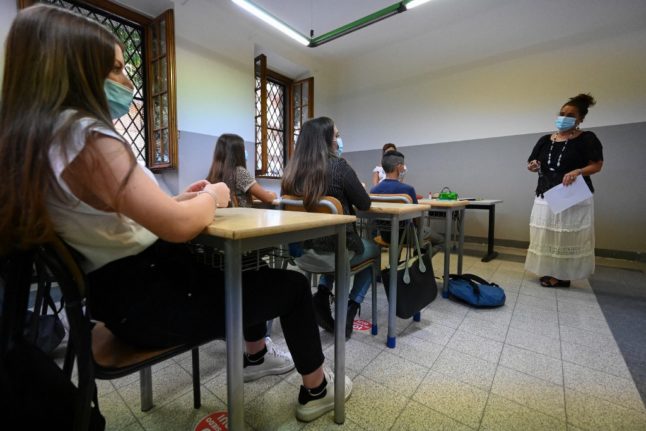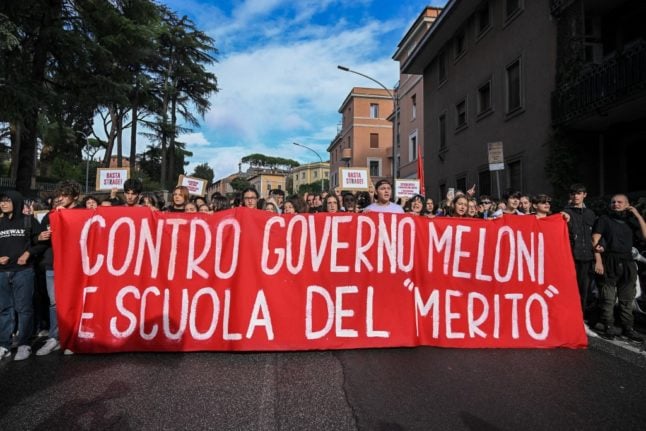Classes in schools across Italy are expected to shrink over the next five years, according to the latest demographic data from Italy’s national statistics institute (Istat).
While this is expected to spell the beginning of the end for the country’s so-called classi pollaio (overcrowded classrooms; literally ‘chicken coop’ classes), it also reportedly means major cuts to the national education budget are around the corner.
READ ALSO: Italy heading for demographic ‘crisis’ as population set to shrink by a fifth
In line with Italy’s long-standing demographic downtrend, the number of Italian students is yet again projected to drop in the school year starting next September.
According to Istat, there will be some 123,000 fewer pupils in the 2022-2023 year, bringing the total down from 7,407,000 to 7,284,000.
The figure is expected to plummet even further over the next five years, with the latest data predicting that the number of pupils in Italy will decrease by 726,000 by 2027.
The drop is attributed to Italy’s chronic population decline, as deaths have surpassed births each year since 2007 – a trend which worsened further amid the pandemic.
Italy is now on track to lose a fifth of its population within 50 years, data suggests.
According to Istat, the country registered only 399,000 newborns in 2021: a 1.3 percent decrease against the previous year and, perhaps more alarmingly, a 31 per cent drop compared to 2008.
In 2020, the average number of children per Italian-born woman hit an all-time low of 1.17.
While the falling number of school pupils is bound to shrink the size of Italian classes, the phenomenon is also expected to mean further cuts to the country’s education budget.
The 2022 Document for Economy and Finance, a yearly joint report drawn up by the Prime Minister and the Economy and Finance Minister, projects a whopping 7-billion-euro cut to resources destined for national education over the next five years.
READ ALSO: ‘Educational crisis’: Italy’s schools compare badly with the rest of Europe, study finds
This is expected to result in layoffs among teaching staff up and down the country, Italian newspaper Repubblica reported on Sunday.
“It’s unacceptable that, after years of cuts, the government has yet again decided to get their hands on the education budget,” a spokesperson for the Italian Teachers Union (Gilda degli Insegnanti) told Repubblica:
Staff cuts are expected to affect schools in small towns and big cities alike.
According to Massimiliano Sambruna, the General Secretary of Cisl Scuola Milano (a union representing Milan-based teaching staff), the city of Milan alone will have “24 fewer primary school classes and 180 fewer teaching jobs” come next September.



 Please whitelist us to continue reading.
Please whitelist us to continue reading.
Member comments